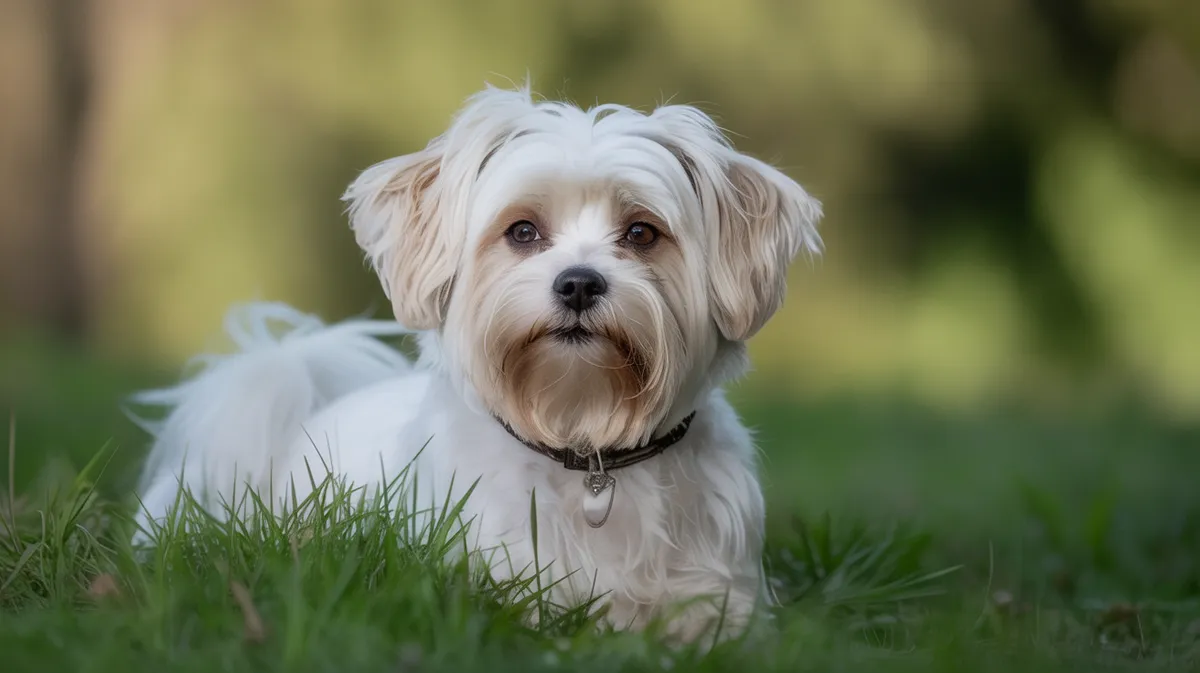
Maltese Dog
Canis lupus familiaris

Meet the Maltese Dog
The Maltese is a small breed of dog known for its long, silky white coat and lively personality. Originally bred as a companion animal, the Maltese has a history dating back thousands of years and was favored by royalty and aristocrats across the Mediterranean. Despite its delicate appearance, the breed is spirited, playful, and surprisingly sturdy. Maltese dogs are highly affectionate and often form strong bonds with their owners, making them excellent lapdogs. Their hypoallergenic coats also make them a popular choice for people with allergies.
Classification
Mammal
Habitat
Domestic (households, urban and suburban areas)
Diet
Omnivore
Lifespan
12-15 years
Conservation
Domesticated
Weight
3-4 kg (6.5-9 lbs)
📖Fascinating Facts
Royal Companions
Maltese dogs have been favored by royalty and nobility for centuries, appearing in the courts of Ancient Greece, Rome, and later European monarchies.
Distinctive Coat
The Maltese sports a single, silky coat of pure white hair that can grow long enough to reach the ground if not trimmed.
Sturdy for Their Size
Although they appear delicate, Maltese dogs are robust and energetic, often excelling in agility and obedience competitions.
📋Detailed Description
The Maltese dog is a diminutive, toy-sized breed characterized by a compact body, fine bone structure, and a distinctive long, silky, pure white coat that drapes to the ground. Adult males typically stand 21–25 cm (8–10 in) at the shoulder and weigh between 3–4 kg (7–9 lb), while females are slightly smaller at 20–23 cm (8–9 in). The breed’s head is moderately rounded with a black button nose, dark, expressive eyes, and pendant ears covered in flowing hair. Despite its delicate appearance, the Maltese is robust and agile, with a lively gait and surprising endurance for its size. The breed is known for its affectionate, intelligent, and alert temperament, making it highly responsive to training and deeply bonded to human companions. Social by nature, Maltese dogs thrive on interaction and can develop separation anxiety if left alone for extended periods. Their hypoallergenic, single-layer coat lacks an undercoat, reducing shedding but requiring regular grooming to prevent matting. The Maltese is a long-lived breed, with a typical lifespan of 12–15 years, and is generally healthy, though prone to certain genetic conditions such as luxating patella and dental issues. Anatomically, the breed’s small size and fine features are the result of centuries of selective breeding for companionship, rather than working or hunting roles. The breed’s origins trace back to ancient Mediterranean civilizations, where it was prized as a status symbol and lapdog among aristocracy.
💡 Did you know?
Despite their small size, Maltese dogs are excellent watchdogs and will alert their owners to any unusual activity.
🔬Research & Sources
Wikipedia Summary
Maltese dog refers both to an ancient variety of dwarf, white-coated dog breed from Italy and generally associated also with the island of Malta, and to a modern breed of similar dogs in the toy group, genetically related to the Bichon, Bolognese, and Havanese breeds. The precise link, if any, between the modern and ancient breeds is not known. Nicholas Cutillo suggested that Maltese dogs might descend from spitz-type canines, and that the ancient variety probably was similar to the latter Pomeranian breeds with their short snout, pricked ears, and bulbous heads. These two varieties, according to Stanley Coren, were perhaps the first dogs employed as human companions.
Last Modified: 5/28/2025
🎭Behavior & Social Structure
Maltese dogs are highly social and form strong attachments to their human families, often following their owners from room to room. They display playful and energetic behavior, enjoying interactive games and short bursts of activity, but are equally content to relax as lapdogs. Their alertness makes them effective watchdogs, as they readily vocalize in response to unfamiliar sounds or visitors. Maltese are intelligent and eager to please, responding well to positive reinforcement training methods. They generally coexist peacefully with other dogs and pets when properly socialized, though some individuals may exhibit territorial behavior. Feeding behavior is typical of small companion breeds: they require small, frequent meals and can be prone to picky eating. Daily routines often include periods of active play, short walks, and regular grooming sessions. Maltese dogs are sensitive to harsh handling or loud environments and thrive best in calm, attentive households.
👶Reproduction & Life Cycle
Maltese dogs reach sexual maturity between 6–12 months of age, though responsible breeders typically wait until females are at least 18 months old before breeding. The breed exhibits no marked seasonality in estrus cycles, with females coming into heat approximately twice a year. Mating is usually managed in controlled environments to ensure the health of both dam and sire. The gestation period averages 63 days, after which litters of 1 to 3 puppies are born, reflecting the breed’s small size. Neonates are altricial, requiring intensive maternal care, including nursing and grooming. Maltese mothers are attentive and protective, with weaning beginning around 4–5 weeks of age. Puppies are typically ready for adoption at 10–12 weeks, by which time they have developed basic social and motor skills. Responsible breeders screen for hereditary conditions such as progressive retinal atrophy and patellar luxation to maintain breed health.
🛡️Adaptations & Survival
The Maltese dog’s most notable physical adaptation is its long, silky, single-layer coat, which offers protection from temperature fluctuations and debris while minimizing shedding—a trait advantageous for indoor living and for allergy-sensitive owners. Their compact size and agile movement are evolutionary specializations for companionship in confined spaces, such as urban dwellings. Behaviorally, the breed has been selectively bred for docility, sociability, and responsiveness to human cues, making it highly adaptable to a variety of home environments. The breed’s alertness and vocal tendencies are remnants of early roles as alert companions, providing warning of intruders. Their relatively low exercise requirements and adaptability to routine changes further enhance their suitability as companion animals.
📚Research Sources
🎨Cultural Significance
The Maltese dog has held a prominent place in human culture for over two millennia, appearing in ancient Greek and Roman art, literature, and even burial sites. Revered as a symbol of luxury and refinement, the breed was favored by aristocrats, including Roman matrons and European royalty such as Queen Elizabeth I and Mary Queen of Scots. In Renaissance and Baroque paintings, Maltese dogs are depicted as cherished lapdogs and companions. The breed is often associated with purity and elegance due to its pristine white coat. In modern times, the Maltese continues to be a popular show dog and companion, frequently featured in media and as a therapy animal due to its gentle disposition.
🔬Recent Research & Discoveries
Recent genetic studies have confirmed the close relationship of the Maltese to other Bichon-type breeds, such as the Bolognese, Havanese, and Bichon Frisé, supporting theories of a shared Mediterranean ancestry. Ongoing research focuses on identifying genetic markers for inherited diseases prevalent in the breed, with the goal of improving health screening and breeding practices. Studies on canine cognition have highlighted the Maltese’s advanced social intelligence and ability to interpret human emotional cues. Veterinary research continues to investigate optimal nutrition and dental care strategies for small breeds, including the Maltese, to address their unique physiological needs. There is also interest in the breed’s hypoallergenic properties, with research examining the composition of their coat and dander.
🎥Wildlife Videos

Maltese Dog - Full History
Did you know Maltese dogs were cherished by ancient Egyptians, Greeks, and Romans? But how did Maltese dogs become ...
Dogs Wiz

Maltese Dog vs. Millions of Deadly Bees: The Ultimate Showdown!
Get ready for an epic battle in "Maltese Dog vs. Millions of Deadly Bees: The Ultimate Showdown!" Watch as a brave Maltese dog ...
Rescue Reboot

3 Full Episode | The Coast | Natura Maltija | Wildlife Malta (Season 2)
With around 219km (136 miles) of coastline, the Maltese Islands are inhabited by a plethora of marine life including Mulletts, ...
Natura Maltija | Wildlife Malta

Land vs. Sea: Unique Adaptations of Malta’s Animals #animal2024 #wildlife
Land vs. Sea: Unique Adaptations of Malta's Animals Discover the fascinating world of Malta's wildlife and uncover the incredible ...
CuteAnimal_JC

Vet Helps Pregnant Dog Give Birth To 10+ Puppies 🥹 8hrs Natural Birth | Bondi Vet Clips | Bondi Vet
No one knew Jewel was pregnant! Get ready for a long night of anxiety, sadness and ultimately joy as Dr Chris helps Jewel ...
Bondi Vet

Distraught Owner Terrified to Lose Her Dog After BLOODY Dog Fight | Bondi Vet Clips | Bondi Vet
Rita brings in her tiny Maltese terrier Garfield after he was viscously attacked by another dog... emotions are high in this ...
Bondi Vet
🌍Habitat Information
The Maltese Dog typically inhabits Domestic (households, urban and suburban areas) environments. Maltese Dogs have adapted to their environments with specialized features and behaviors.
Primary Habitat:
Domestic (households, urban and suburban areas)
More detailed habitat information will be available soon.
🛡️Conservation Status
The Maltese Dog is currently classified as Domesticated. Conservation efforts are crucial for preserving this species for future generations.
Common Threats:
- 🏠Habitat loss and fragmentation
- 🌡️Climate change impacts
- 🎯Hunting and poaching
- 🏭Human-wildlife conflict
⚠️Threats & Conservation Challenges
As a domesticated companion breed, the Maltese faces few natural threats; however, it is susceptible to several breed-specific health challenges. Common issues include dental disease due to crowded teeth, patellar luxation, hypoglycemia in puppies, and inherited eye disorders. Overbreeding and irresponsible breeding practices can exacerbate genetic health problems and lead to temperament issues. Maltese dogs are also at risk of injury due to their small size, especially in households with young children or larger pets. While the breed is not threatened in terms of population, puppy mills and unethical breeding remain significant welfare concerns. The breed’s popularity can lead to impulsive adoptions, resulting in abandonment or surrender to shelters if owners are unprepared for grooming and care requirements.
🔬Scientific Classification
Scientific Name
Canis lupus familiaris
Classification Hierarchy
🔍 About Taxonomic Classification
Taxonomic classification is a hierarchical system used by scientists to classify and organize living organisms based on shared characteristics and evolutionary relationships.
The system moves from broad categories (Kingdom) to increasingly specific ones, with each animal's scientific name typically consisting of its Genus and species.
📝Community Notes
Share your observations and insights about the Maltese Dog with our community of wildlife enthusiasts.
Join Our Community
Sign in to share your observations and connect with fellow wildlife enthusiasts.
Sign In to ContributeNo community notes yet
Be the first to share your observations about the Maltese Dog!
Explore Maltese Dog
Select a tab above to learn more about this amazing animal.
📸Photo Gallery
No photos available for this animal yet.
🌟Discover More Wildlife
Continue your journey of discovery with more fascinating animals from our database
